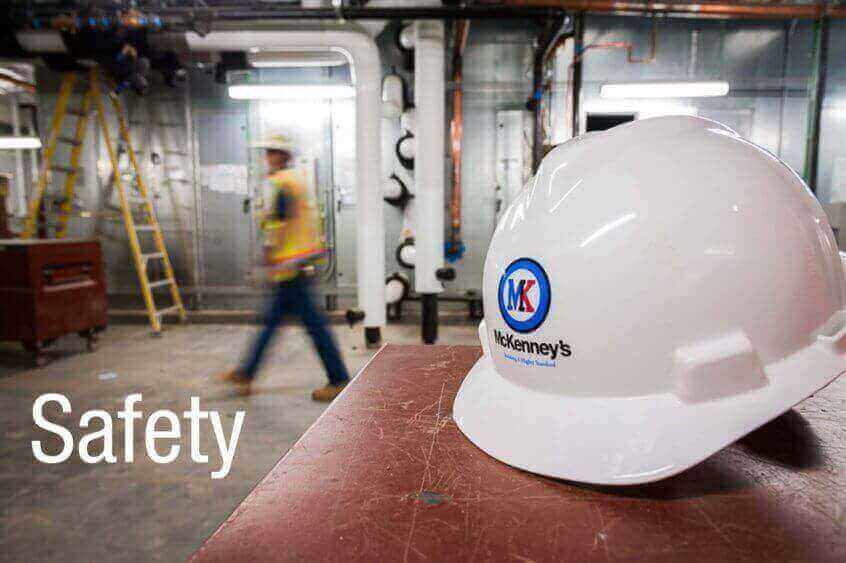We spend a great deal of time at McKenney’s on the behavioral side of injury prevention. We believe that by understanding the root causes of incidents we can better plan and act in a way to prevent future accidents from occurring. This is the predictive side of Safety. In a similar way, we can examine and document the activity on a site that results in a Near Miss.
So, what is a Near Miss?
OSHA defines a Near Miss as an unplanned event that did not result in injury, illness, or damage – but had the potential to do so. Collecting Near-Miss reports drives a culture that seeks to identify and control hazards before they result in an injury. We do not want to take a Near Miss lightly nor miss the importance of recognizing and reporting it.
Let’s illustrate this with an example:
A worker walks across the floor at a construction site and turns a corner and nearly collides with another worker. To avoid the collision, he steps to the side, inadvertently hitting a ladder. The ladder is being used by a worker who has placed a tool on the top of the ladder. The tool falls and hits the ground, close to someone working below. No one is hurt in this scenario; however, workers close by experience multiple Near-Miss situations – any one of which could have led to a serious injury.
So why is it important to recognize and report a Near Miss?
Reason #1: When we have a Near Miss, we want to carefully investigate it, determine the root cause, and implement appropriate controls accordingly. The intent is to learn the lesson once – at a Near-Miss level – and then share any prevention measures amongst our project teams to prevent similar accident potentials from happening. This can be done on the Foremen level if the Near Miss is minor, or it can involve Field Operations, Safety and project managers if it is something we want to do a root cause on and share with others quickly.
Reason #2: Looking out for and reporting Near Misses keeps us actively engaged in looking for risks and helps create a culture that seeks to identify and control hazards. The culture this creates focuses on lessons learned and how we can avoid more severe incidents versus assigning blame or worry over who did what wrong.
Reason #3: Collecting this information long term will help us better see where our risks lie and do so before they repeat and turn into incidents which injure our workers. With the Observations tool we have had since November of last year, we now have a great way to collect and track these Near Misses and to start to identify common risks.
We at McKenney’s are focused on providing a great safe work environment on all our jobsites and creating a world-class safety environment – one where ALL of our employees return home in the same condition as they left. Since the beginning of the year, McKenney’s has had over 150 workers report over 400 Near-Miss observations. By paying special attention to these and increasing awareness we will make a positive impact on behavior – and further our commitment to Moving Safety Forward!
Have a question for our experts? Leave your comment below and check out our website for more information.






